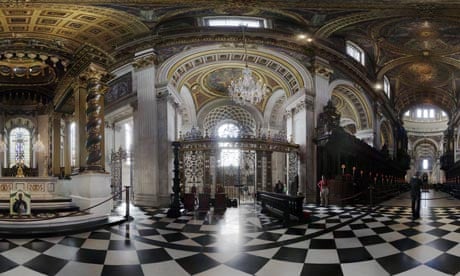The history of architecture is also the history of images of architecture, and one changes the other. Now, thanks to computer software which stitches together dozens of photographs taken from a single point at different angles, it is possible to communicate buildings in a new way. You are put in the middle of a space, and – using your computer mouse or dragging your iPad screen – you can look in any direction you choose: up, down, sideways, diagonally, in any direction in full 360 degree turn, in three dimensions. As you navigate the image yourself, you are no longer presented with a finite image, cropped and edited.
With these images, the rules change. Floors and ceilings become as important as walls. You are immersed, not put at a distance, and the experience of being inside a space becomes more important than viewing a detached object. Interior counts more than exterior and a basic truth about architecture, that it is ultimately about making spaces not things, becomes apparent.
The first space in our series is the apse of St Paul's Cathedral in London. St Paul's is now wrapped in such a fug of ceremony and familiarity – so many national events, weddings, postcards, much-reproduced images of its dome surviving the blitz – that it is easy to forget what a radical building it was. By far the biggest classical building in Britain, it was a huge, full-blown, consistent work in the style this country had been slow to adopt.
It also, thanks to some clever engineering to hold up the dome, did things that had never been done by anyone, anywhere. It has its compromises, thanks to a struggle between Sir Christopher Wren and his ecclesiastical client: he wanted a purer, more perfectly symmetrical plan; they wanted something longer and more medieval to suit their idea of how worship should be arranged. The end result, inside, matches the grandeur of Renaissance monuments in Rome and Paris but without too many Catholic flourishes.
It is a temple to the balances of power that define both the constitutional monarchy and the Anglican church. It is about being majestic but not too much so, at which it has done a very good job for three centuries.
